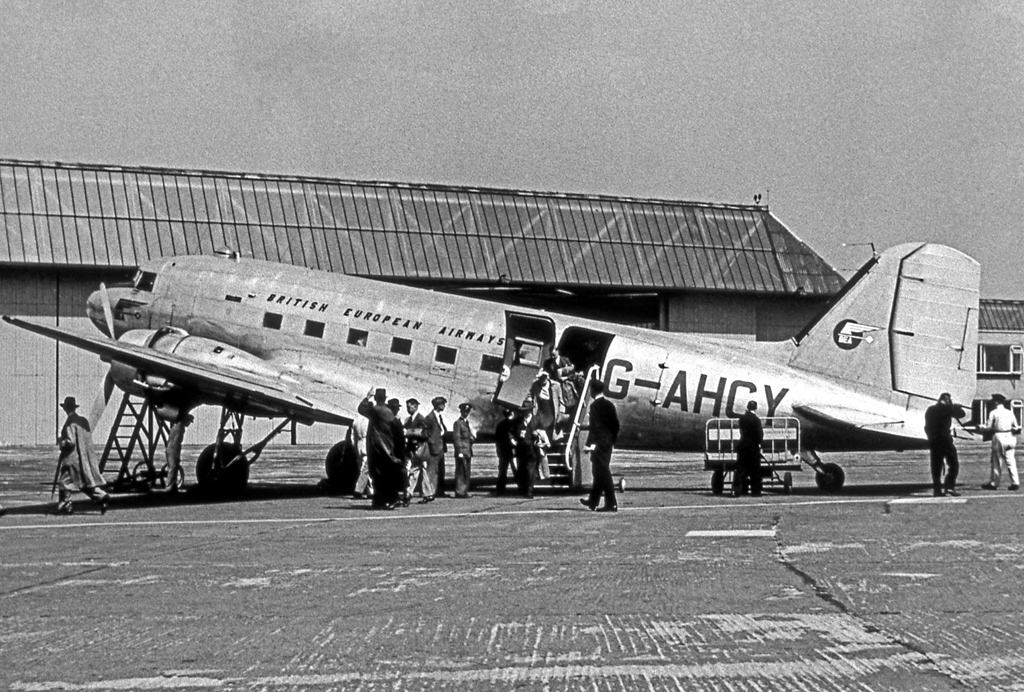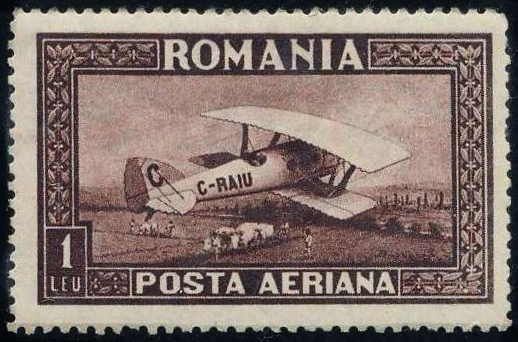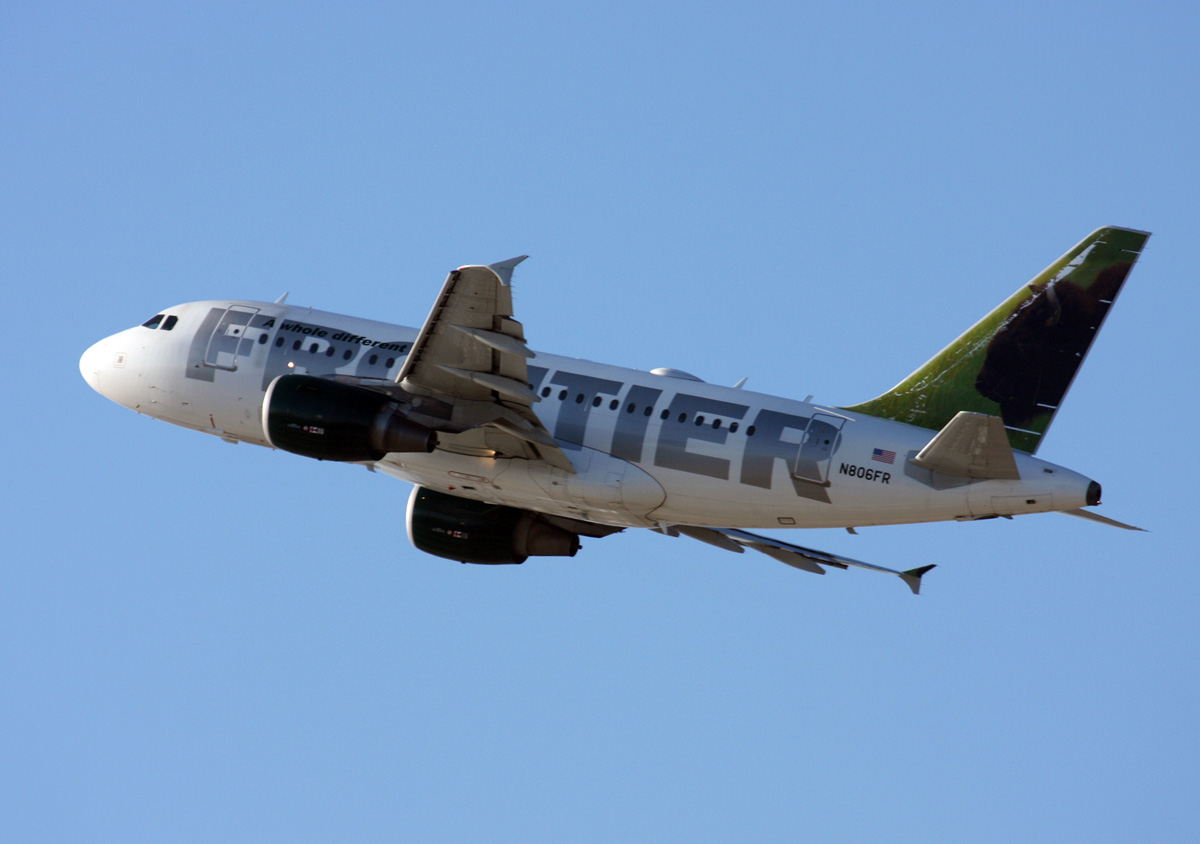|
One-Eleven
The BAC One-Eleven (BAC-111, BAC 1-11) is a retired early jet airliner produced by the British Aircraft Corporation (BAC). Conceived by Hunting Aircraft as a 30-seat jet, before its merger into BAC in 1960, it was launched as an 80-seat airliner with a British United Airways (BUA) order on 9 May 1961. The prototype conducted its maiden flight on 20 August 1963, and it was first delivered to BUA on 22 January 1965. The 119-seat, stretched 500 series was introduced in 1967. Total production amounted to 244 until 1982 in the United Kingdom including 1982 to 1989 in Romania where nine Rombac One-Elevens were licence-built by Romaero. The short haul, narrowbody aircraft was powered by aft-mounted Rolls-Royce Spey low-bypass turbofans, a configuration similar to the earlier Sud Aviation Caravelle and later McDonnell Douglas DC-9, Douglas DC-9. It competed with early Boeing 737 models and was used by British, US, and European airlines, including Romanian operators. It was replaced ... [...More Info...] [...Related Items...] OR: [Wikipedia] [Google] [Baidu] |
British European Airways
British European Airways (BEA), formally British European Airways Corporation, was a British airline which existed from 1946 until 1974. BEA operated to Europe, North Africa and the Middle East from airports around the United Kingdom. The airline was also the largest UK domestic operator, serving major British cities, including London, Manchester, Glasgow, Edinburgh and Belfast, as well as areas of the British Isles such as the Highlands and Islands of Scotland, the Channel Islands and the Isle of Man.''Classic Aircraft (Gone but not forgotten ... BEA: Highlands and Islands – Never on a Sunday)'', Vol. 45, No. 6, p. 46, Ian Allan Publishing, Hersham, June 2012 BEA also operated a network of internal German routes between West Berlin and West Germany as part of the Cold War agreements regulating air travel within Germany.''Classic Aircraft (Gone but not forgotten ... BEA: Internal German Services – Berlin-bound)'', Vol. 45, No. 6, p. 51, Ian Allan Publishing, Hersham, Jun ... [...More Info...] [...Related Items...] OR: [Wikipedia] [Google] [Baidu] |
British United Airways
British United Airways (BUA) was a private, independentindependent from government-owned corporations airline in the United Kingdom formed as a result of the merger of Airwork Services#Origins, Airwork Services and Hunting-Clan Air Transport in July 1960, making it the largest wholly private airline based in the United Kingdom at the time. British and Commonwealth Holdings, British and Commonwealth Shipping (B&C) was the new airline's main shareholder. At its inception, BUA assumed the aircraft and operations of its predecessors. These included a fleet of 90 assorted fixed-wing aircraft and helicopters that continued to operate mainly non-scheduled services. Gatwick Airport, Gatwick became BUA's main operating base while Stansted Airport, Stansted was the main base for trooping flights until 1964. An order for ten BAC One-Eleven jet aircraft in May 1961 launched BUA's fleet re-equipment programme in support of its long-term policy to develop primarily as a scheduled airline. ... [...More Info...] [...Related Items...] OR: [Wikipedia] [Google] [Baidu] |
Romaero
Romaero, formerly Intreprinderea de Reparații Material Aeronautic or IRMA ('Enterprise for the Repair of Aeronautical Material'), is a Romanian aerospace company, headquartered in the Băneasa neighborhood of Bucharest. In recent years, it has largely concentrated on aircraft repairs as well as component manufacturing for overseas companies. The company was founded by Royal Decree in 1920 under the name ''ASAM''. It was rebranded as IRMA in 1944. In 1978, the company again changed its name to ''IAvB – Întreprinderea de Avioane București'' ('Bucharest Enterprise Aircraft'). Finally, it was rebranded as ''Romaero S.A.'' in 1991. Perhaps the largest manufacturing programme that the company has been involved in was mass production of the British-designed Britten-Norman Islander; over 500 airframes were reportedly completed in Romania. Another major independent undertaking of the firm was the Rombac 111 airliner, a license-produced model of the BAC One-Eleven produced in Romani ... [...More Info...] [...Related Items...] OR: [Wikipedia] [Google] [Baidu] |
Rolls-Royce Spey
The Rolls-Royce Spey (company designations RB.163 and RB.168 and RB.183) is a low-bypass turbofan engine originally designed and manufactured by Rolls-Royce that has been in widespread service for over 40 years. A co-development version of the Spey between Rolls-Royce and Allison in the 1960s is the Allison TF41. Intended for the smaller civilian jet airliner market when it was being designed in the late 1950s, the Spey concept was also used in various military engines, and later as a turboshaft engine for ships known as the Marine Spey, and even as the basis for a new civilian line, the Rolls-Royce RB.183 Tay. Aviation versions of the base model Spey have accumulated over 50 million hours of flight time. In keeping with Rolls-Royce naming practices, the engine is named after the River Spey. Design and development In 1954 Rolls-Royce introduced the first commercial bypass engine, the Rolls-Royce Conway, with 17,500 lbf (78 kN) of thrust aimed at what was then the ... [...More Info...] [...Related Items...] OR: [Wikipedia] [Google] [Baidu] |
Braniff Airways
Braniff Airways, Inc., operated as Braniff International Airways from 1948 until 1965, and then Braniff International from 1965 until the cessation of air operations, was an American airline that operated from 1928 until 1982 and continues today as a retailer, hotelier, travel service and branding and licensing company, administering the former airline's employee pass program and other airline administrative duties. Braniff's routes were primarily in the midwestern and southwestern United States, Mexico, Central America, and South America. In the late 1970s it expanded to Asia and Europe. The airline ceased air carrier operations in May 1982 because of high fuel prices, credit card interest rates and extreme competition from the large trunk carriers and the new airline startups created by the Airline Deregulation Act of December 1978. Two later airlines used the Braniff name: the Hyatt Hotels-backed Braniff, Inc. in 1983–89, and Braniff International Airlines, Inc. in 1991 ... [...More Info...] [...Related Items...] OR: [Wikipedia] [Google] [Baidu] |
TAROM
TAROM (; legally ''Compania Națională de Transporturi Aeriene Române TAROM S.A.'') is the flag carrier and oldest currently operating airline of Romania, based in Otopeni near Bucharest. Its headquarters and its main hub are at Henri Coandă International Airport. It is currently the first and largest airline operating in Romania based on international destinations, international flights and the second-largest measured by fleet size and passengers carried. The brand name is an acronym of the (Romanian Air Transport). Over ninety-seven percent (97.22%) of TAROM is owned by the Romanian Government (Ministry of Transport). The airline transported almost 2.75 million passengers in 2018, with an average load factor of 74%. The airline joined SkyTeam on 25 June 2010. History The beginnings The history of the Romanian National Air Transport Company can be traced back to 1920, when CFRNA - (''French-Romanian Company for Air Navigation'') was founded. On 13 April 1920, the ... [...More Info...] [...Related Items...] OR: [Wikipedia] [Google] [Baidu] |
Jet Airliner
A jet airliner or jetliner is an airliner powered by jet engines (passenger jet aircraft). Airliners usually have twinjet, two or quadjet, four jet engines; trijet, three-engined designs were popular in the 1970s but are less common today. Airliners are commonly classified as either the large wide-body aircraft, medium narrow-body aircraft and smaller regional jet. Most airliners today are powered by jet engines, because they are capable of safely operating at high speeds and generate sufficient thrust to power large-capacity aircraft. The first jetliners, introduced in the 1950s, used the simpler turbojet engine; these were quickly supplanted by designs using turbofans, which are quieter and more fuel-efficient. History Early history The first airliners with turbojet propulsion were experimental conversions of the Avro Lancastrian piston-engined airliner, which were flown with several types of early jet engine, including the de Havilland Ghost and the Rolls-Royce Nene. They ... [...More Info...] [...Related Items...] OR: [Wikipedia] [Google] [Baidu] |
McDonnell Douglas DC-9
The McDonnell Douglas DC-9 is an American five-abreast, single-aisle aircraft designed by the Douglas Aircraft Company. It was initially produced as the Douglas DC-9 prior to August 1967, after which point the company had merged with McDonnell Aircraft to become McDonnell Douglas. Following the introduction of its first jetliner, the high-capacity DC-8, in 1959, Douglas was interested in producing an aircraft suited to smaller routes. As early as 1958, design studies were conducted; approval for the DC-9, a smaller all-new jetliner, came on April 8, 1963. The DC-9-10 first flew on February 25, 1965, and gained its type certificate on November 23, to enter service with Delta Air Lines on December 8. The DC-9 is powered by two rear-mounted Pratt & Whitney JT8D low-bypass turbofan engines under a T-tail for a cleaner wing aerodynamic. It has a two-person flight deck and built-in airstairs to better suit smaller airports. The aircraft was capable of taking off from 5,000 ft r ... [...More Info...] [...Related Items...] OR: [Wikipedia] [Google] [Baidu] |
British Aircraft Corporation
The British Aircraft Corporation (BAC) was a British aircraft manufacturer formed from the government-pressured merger of English Electric, English Electric Aviation Ltd., Vickers-Armstrongs, Vickers-Armstrongs (Aircraft), the Bristol Aeroplane Company and Hunting Aircraft in 1960. Bristol, English Electric and Vickers became "parents" of BAC with shareholdings of 20%, 40% and 40% respectively. BAC in turn acquired the share capital of their aviation interests and 70% of Hunting Aircraft several months later. History Formation BAC's origins can be traced to a statement issued by the British government that it expected the various companies involved in the aircraft, guided weapons and engine industries to consolidate and merge with one another. Furthermore, the government also promised incentives to motivate such restructuring; the maintenance of government research and development spending and the guarantee of aid in launching "promising new types of civil aircraft". One partic ... [...More Info...] [...Related Items...] OR: [Wikipedia] [Google] [Baidu] |
Hunting Aircraft
Hunting Aircraft was a British aircraft manufacturer that produced light training aircraft and the initial design that would evolve into the BAC 1-11 jet airliner. Founded as Percival Aircraft Company in 1933, the company later moved to Luton, England. It was eventually taken over by the British Aircraft Corporation (BAC) in 1960. History The company was formed as Percival Aircraft Co. in Gravesend in 1933 by Edgar Percival with Lt. Cdr E.B.W. Leak to produce his own designs. The first aircraft was the Percival Gull - the prototype was built for Percival by the British Aircraft Company and production aircraft by Parnall Aircraft. The company moved to Gravesend Airport in Kent, where it could build the Gull itself.Grey 1972, pp. 64c–65c. Restructured in 1936, it became Percival Aircraft Ltd, and moved to Luton Airport. The company became part of the Hunting Group in 1944. Percival, who had resigned from the board to serve in the Royal Air Force Volunteer Reserve du ... [...More Info...] [...Related Items...] OR: [Wikipedia] [Google] [Baidu] |
Narrowbody Aircraft
A narrow-body aircraft or single-aisle aircraft is an airliner arranged along a single aisle, permitting up to 6-abreast seating in a cabin less than in width. In contrast, a wide-body aircraft is a larger airliner usually configured with multiple aisles and a fuselage diameter of more than , allowing at least seven-abreast seating and often more travel classes. Market Historically, beginning in the late 1960s and continuing through the 1990s, twin engine narrow-body aircraft, such as the Boeing 737 Classic, McDonnell-Douglas MD-80 and Airbus A320 were primarily employed in short to medium-haul markets requiring neither the range nor the passenger-carrying capacity of that period's wide-body aircraft. The re-engined Boeing 737 MAX and Airbus A320neo jets offer 500 miles more range, allowing them to operate the 3,000 miles transatlantic flights between the eastern U.S. and Western Europe, previously dominated by wide-body aircraft. Norwegian Air Shuttle, JetBlue and TAP Portuga ... [...More Info...] [...Related Items...] OR: [Wikipedia] [Google] [Baidu] |
Airbus A320 Family
The Airbus A320 family is a series of narrow-body airliners developed and produced by Airbus. The A320 was launched in March 1984, first flew on 22 February 1987, and was introduced in April 1988 by Air France. The first member of the family was followed by the stretched A321 (first delivered in January 1994), the shorter A319 (April 1996), and the shortest variant, the A318 (July 2003). Final assembly takes place in Toulouse in France; Hamburg in Germany; Tianjin in China since 2009; and Mobile, Alabama, in the United States since April 2016. The twinjet has a six-abreast economy cross-section and came with either CFM56-5A or -5B, or IAE V2500 turbofan engines, except the A318. The A318 has either two CFM56-5B engines or a pair of PW6000 engines in place of the IAE V2500. The family pioneered the use of digital fly-by-wire and side-stick flight controls in airliners. Variants offer maximum take-off weights from , to cover a range. The 31.4 m (103 ft) ... [...More Info...] [...Related Items...] OR: [Wikipedia] [Google] [Baidu] |










